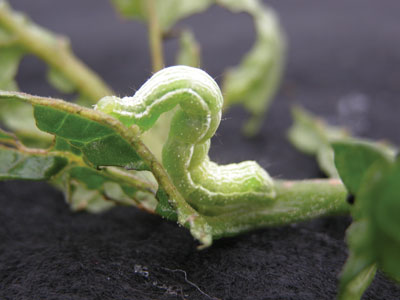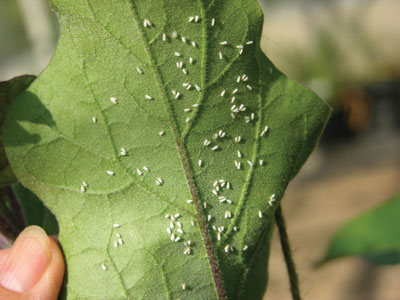
Features
Crop Protection
Inputs
Greenhouse grower notes: Low temperatures and pests
December 3, 2009 By Gillian Ferguson
It seems reasonable to think that shutting down the greenhouse for a few weeks during the cold months to clean up should be sufficient to freeze and eradicate pest populations.
It seems reasonable to think that shutting down the greenhouse for a
few weeks during the cold months to clean up should be sufficient to
freeze and eradicate pest populations.
However, there are two points that work against this assumption.
Firstly, insects and mites have been extremely successful at adapting
to the cold temperatures of winter. For example, pests such as spider
mites, Lygus bugs, and European corn borers enter the state of diapause
during fall. In this physiological state, they slow down considerably
and undergo various internal changes that enable them to survive the
winter. Secondly, temperatures even within an unheated greenhouse are
usually quite a few degrees warmer than outdoor temperatures, and
therefore, likely never quite reach freezing point. It is for this
reason that even those insects that are not specifically adapted to the
cold, and are in fact found mainly in warmer climates, can still
survive in the greenhouse during the winter months.
 |
|
| Mature cabbage looper on tomato leaf. |
|
 |
|
| Large numbers of whiteflies infesting eggplant leaf. (photos courtesy Gillian Ferguson) |
A few examples of pests that do not diapause, but that can still survive a cold period in our greenhouses are provided.
Greenhouse whitefly – Although the greenhouse whitefly has no stage
specially adapted for hibernation, its egg stage is highly tolerant to
low temperatures. For instance, eggs can survive up to 15 days at -3ºC,
and as many as five days at -6ºC. As long as cold-tolerant green plant
material exists in the greenhouse, the greenhouse whitefly has a good
chance of surviving relatively cold conditions via the egg stage.
Thrips – Most commonly, female adults survive winter conditions. During
the fall months, thrips usually move away from the light and seek
cracks and crevices. Many species can overwinter just beneath the soil
or on plant debris. Any crop residues left in the greenhouse or in
areas surrounding the greenhouse also provide suitable overwintering
sites and can contribute to large infestations the following spring.
Survival of individuals in litter can be considerably reduced if it’s
buried sufficiently deep to prevent adults from reaching the surface.
Thrips are very susceptible to very dry or very wet conditions. Such
conditions probably cause more deaths than low temperatures.
Moth pests – The cabbage looper, a common moth pest, does not tolerate
prolonged cold weather and usually reinvades all of Canada in late
spring or early summer after overwintering in southern latitudes.
However, the lower limit for its development is about 10 to 12ºC. If
the cleanup period is short and days are sunny providing relatively
warm conditions, the pupal stages of this pest can very likely survive
in cryptic areas to re-emerge relatively soon after the new crop has
been planted.
The tomato pinworm is another moth pest that thrives in warmer
climates, which can also develop under cooler conditions. At lower
temperatures, the insect simply slows down its metabolic rate and takes
longer to complete its life cycle. For example, whereas it completes
its life cycle in 26 days at 24-26ºC, it takes about 100 days to
complete it at 10-13ºC. Thus, although the tomato pinworm is reported
to be unable to survive the winter outdoors in Canada, this strategy of
lowering its metabolism can enable it to survive in protected
locations. This survival mechanism applies broadly to those insects
normally found in warmer areas but which were somehow brought to colder
climates.
MOST GREENHOUSE PESTS CAN OVERWINTER IN CANADA
In general, most of the pests that afflict greenhouse crops are able
to survive in the greenhouse between crops during the winter period,
particularly if infested debris is left in the house. The fact that
temperatures may not even reach freezing point because of the buffering
effect of the structure means that even those pests that don’t have a
specific overwintering stage can survive.
Instead, we need to capitalize on the higher activity and metabolic
rate of insects at higher temperatures and use this to our advantage.
Despite the energy cost, maintaining a warm greenhouse during and after
cleanup will contribute to hastening the completion of their life
cycles, and particularly, in making them more vulnerable to applied
controls. We have much more to gain in reducing pest populations by
combining warmth with dry conditions, versus attempting to freeze them
out.
Gillian Ferguson is the greenhouse vegetable IPM specialist with the
Ontario Ministry of Agriculture, Food & Rural Affairs, Harrow, Ont.
• 519-738-1258 or e-mail gillian.ferguson@ontario.ca
Print this page